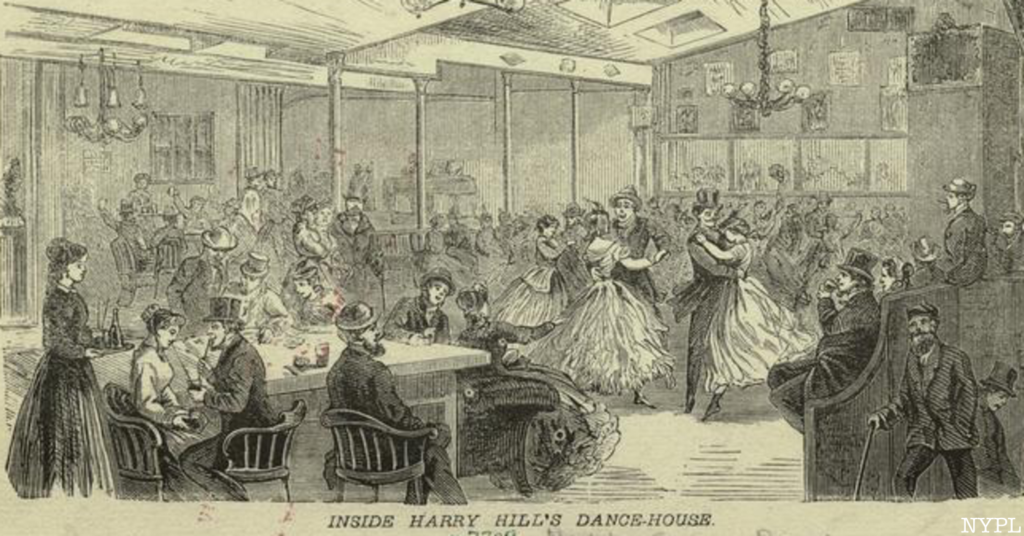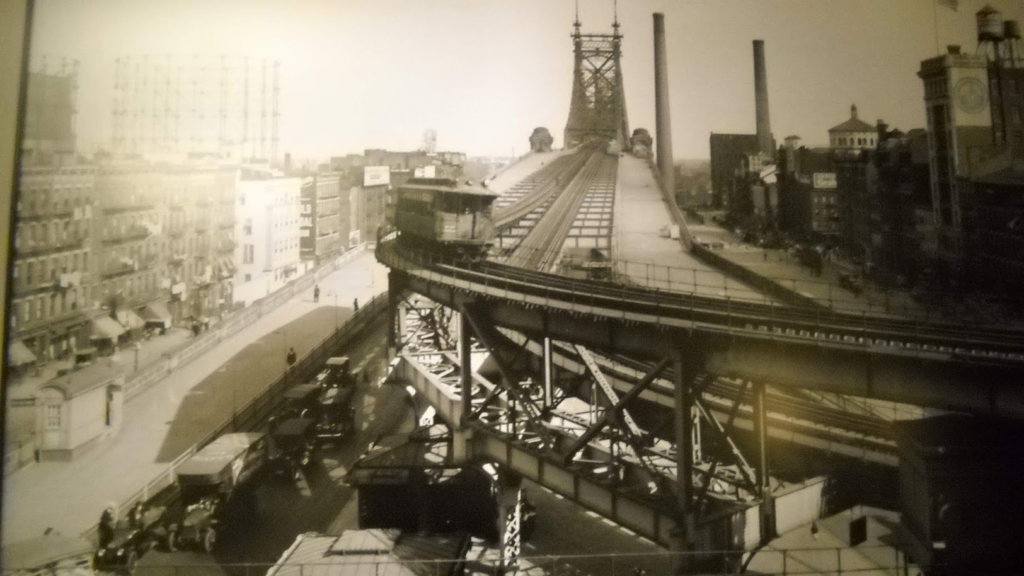Weekend, May 31 – June 2, 2024 – HOUSTON STREET, NOT A GREAT NEIGHBORHOOD



FRIDAY-SUNDAY,
MAY 31-JUNE 2, 2024
ISSUE #1246
HARRY HILL’S
CONCERT SALOON
AND THE
UNDERBELLY
OF
GILDED AGE NYC
UNTAPPED NEW YORK
On June 12th, uncover more sordid tales of the Gilded Age with Carole Lawerence, author of the novel Cleopatra’s Dagger. This virtual talk is free for Untapped New York Insiders! Not an Insider yet? Become a member today with promo code JOINUS and get your first month free!
Cleopatra’s Dagger follows the story of fictional 19th-century journalist Elizabeth van den Broek. When Elizabeth and her bohemian friend Carlotta Ackerman find a woman’s body wrapped like a mummy in a freshly dug hole in Central Park―the intended site of an obelisk called Cleopatra’s Needle―the macabre discovery leads Elizabeth on an investigation through New York City’s darkest shadows. Her hunt for the truth takes Elizabeth to the Bowery where she braves the debaucherous crowds of Harry Hill’s to get information on the mysterious murder.
In his 1882 work New York by Sunlight and Gaslight, James McCabe describes concert saloons as “places where the devil’s work is done.” He goes on to describe the scene inside: “They provide a low order of music, and the service of the place is rendered by young women, many of whom are dressed in tights and all sorts of fantastic costumes, the chief object of which is to display the figure as much as possible.” These fantastically costumed women were “waiter girls” who served drinks.
These venues likely sprang up in the years preceding the Civil War and grew in popularity over the next decade. They were a combination of the English music hall and American tavern. According to the book The New York Concert Saloon: The Devil’s Own Nights by Brooks McNamara, there were roughly seventy concert halls operating in Manhattan by 1862. They tended to be concentrated in rougher parts of the city like the Bowery (described as “the centre of one of Satan’s strongholds”), Hell’s Kitchen, and the Tenderloin. Harry Hill’s was located at Houston and Crosby, just a few blocks west of the Bowery and east of Broadway.
Harry Hill’s Dance Hall was remembered in a December 1927 issue of The New Yorker in an article recalling “When New York was Really Wicked.” The report described Harry’s as a “sprawling, dingy, two-story frame house which had two front entrances, a small door for the ladies who were admitted free, and a larger one for gentlemen, who paid twenty cents.”

Image viaNYPL
Inside there were multiple rooms and bars and a small simple stage where various acts were performed. The proprietor himself took to the stage every week to recite some of his own poetry. Mark Twain wrote of his visit to Harry’s in 1867, describing the female dancers who “did spin around with such thoughtless vehemence that I was constrained to place my hat before my eyes.”
Harry posted a list of rules for his establishment on the wall including no profanity, no loud talking, and no drunkenness. Thanks largely to the owner’s low tolerance for any truly disruptive behavior, Harry’s was a cut above the worst of the dance halls where robbery and violence were rampant, but still on a lower rung than the more reputable theatres of Broadway further uptown. In his New York Times obituary, Harry Hill was described as “a queer combination of the lawless, reckless, rough, and honest man.”
In April 1862, New York passed the Concert Saloon Bill. The New York Times reported that this ambiguous bill would “purge our places of public amusement of most of their evils” and” to “make respectable and popular those that are properly conducted.” Essentially, the bill required all venues to obtain a license for any spoken or sung performances, though no licenses were granted to places that served alcohol or had waiter girls. Hefty fines were imposed on venues that skirted these rules, though many concert saloon proprietors took their chances, either ignoring the bill entirely or finding crafty way around the new rule.

Image via NYPL
At Harry’s, the entertainment offering shifted to boxing matches. Some of the most well-known boxers got their start on Harry’s stage. Hill even put on a fight between two female boxers.
Due to financial struggles from his other business ventures, Harry was forced to close the dance hall in the 1880s. By the turn of the 20th century, most concert saloons had closed but their influence led to other forms of entertainment like burlesque and vaudeville.

PHOTO OF THE DAY
EARLY PHOTO OF A TRAIN ON THE UPPER LEVEL OF
THE QUEENSBORO BRIDGE
THE UPPER LEVEL WAS RESERVED FOR PEDESTRIANS AND
THE SUBWAY TRAINS.
THINK OF THIS AS YOU ARE ON A SINGLE LANE, AS THE
UPPER LEVEL IS REBUILT, 115 YEARS AFTER OPENING

CREDITS:
Judith Berdy
UNTAPPED NEW YORK
All image are copyrighted (c) Roosevelt Island Historical Society unless otherwise indicated
THIS PUBLICATION FUNDED BY DISCRETIONARY FUNDS FROM CITY COUNCIL MEMBER JULIE MENIN & ROOSEVELT ISLAND OPERATING CORPORATION PUBLIC PURPOSE FUNDS.


Copyright © 2024 Roosevelt Island Historical Society, All rights reserved.Our mailing address is:
rooseveltislandhistory@gmail.com

Leave a comment